The lord and important retainers would have sat at the north end of the hall, and in the centre of the building was a large open hearth. Doors at the north end led to the lord’s private apartments, whilst at the south end there was access to a separate kitchen above an undercoft (John of Gaunt’s cellar), where ale, wine and food would have been stored.
- It was one of Leicester’s finest medieval coaching inns but the last remaining part of the building was demolished in 1836
- Richard III reputedly spent one or two final nights at the Blue Boar Inn before the Battle of Bosworth on 22 August 1485
- The bed at the Inn that Richard III slept in was apparently brought with him from Nottingham to Leicester before the Battle of Bosworth
Where Richard III spent his final night
On Leicester’s medieval High Street (now Highcross Street), close to where a Travelodge stands today, there was once an elaborate timber-framed building known as the Blue Boar Inn. Here, by tradition, Richard III spent a final night or two before the Battle of Bosworth in 1485.
An inn fit for a king
Medieval inns like the Blue Boar were the grand hotels of their day, providing food, lodgings and stabling for travellers, including wealthy merchants, aristocrats and royalty. Typically, inns would have buildings on the street frontage and a gateway providing access to a rear courtyard that might be surrounded by further buildings with first-floor accommodation accessed via external staircases and galleries.
The Blue Boar
There are few historical references to the Blue Boar Inn and even its name in the 15th century is uncertain. Some believe that it was originally called the White Boar (Richard III’s emblem), the sign being hastily changed after Bosworth to a Blue Boar (the insignia of Henry VII’s general, John de Vere, Earl of Oxford). Later, there are hints that it changed its name again to the Blue Bell, although this may simply be confusion with another Leicester inn.
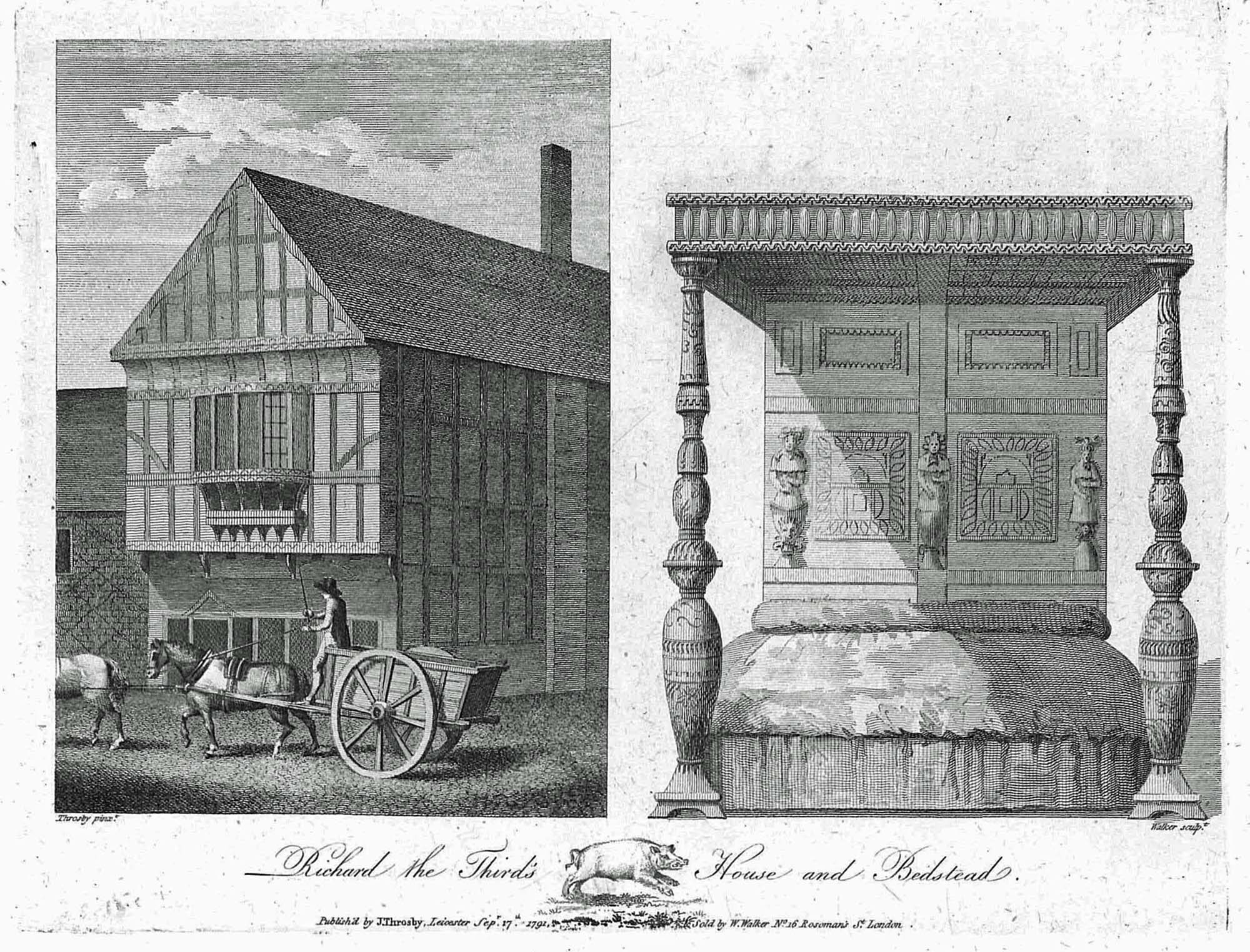
The ‘king’s bed’ and murder most foul
Since Richard III’s death, many legends have arisen concerning the king. One is that he could not sleep in strange beds and so brought his own with him from Nottingham to Leicester, where it was then set up for him in the Blue Boar Inn. When Richard left Leicester, his bed remained behind ready for his return. This, of course, never happened. After his death the bed stayed at the Blue Boar, passing from tenant to tenant until it was eventually acquired by Leicestershire Museums Service, where it is today on display at Donington Le Heath Manor House.
Infamously, in 1604 one owner Mrs Clark was murdered because of a hoard of gold coins that she allegedly found hidden in the bed. The criminals, Thomas Harrison and Edward Bradshaw, aided by Mrs Clark’s servant, Alice Grimbold, robbed and murdered the lady. They were quickly apprehended and Bradshaw was hanged for his crime in 1605, whilst poor Alice – found to be an accomplice in the robbery and murder of her mistress – was burnt at the stake.
After the murder the bed became quite infamous and in 1611 ‘King Richard’s bed-sted I’ Leyster’ was included on a list of sights and exhibitions in England which could be seen for a penny.
Reconstructing the Blue Boar Inn
The Blue Boar was demolished in 1836, and our knowledge of the inn comes mostly from a number of 18th- and 19th-century engravings, the best-known of which were made by the noted local artist John Flower.
Shortly before the Blue Boar was demolished a Leicester architect, Henry Goddard, also made a detailed record of the building, with meticulous drawings including the roof structure, timber joints and mouldings, all carefully annotated with measurements.
These notes were recently rediscovered in the Goddard family archive and have been used to reconstruct a 3D model of what the Inn would have looked like.
Gallery
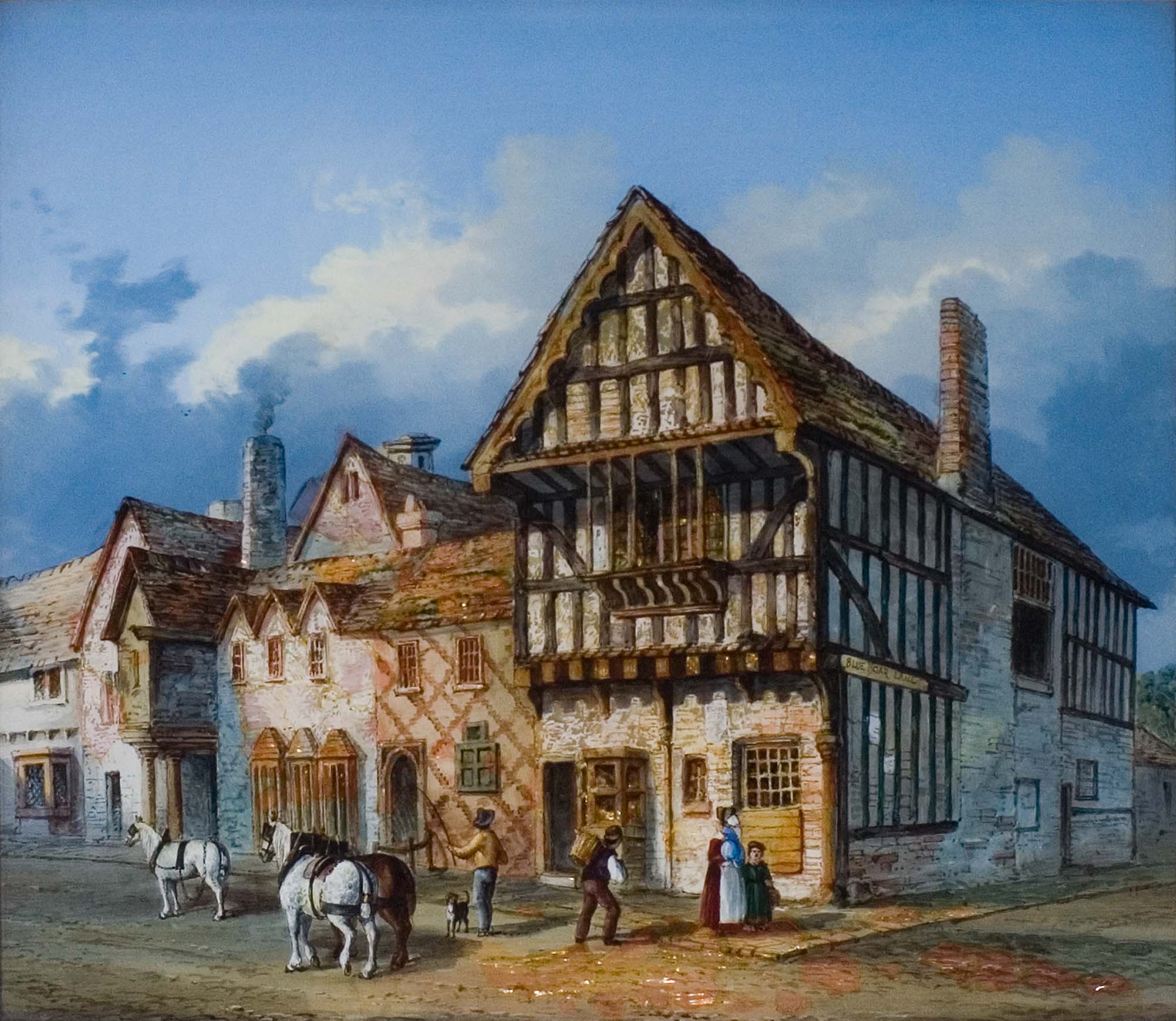
From the collections of Leicester Museums
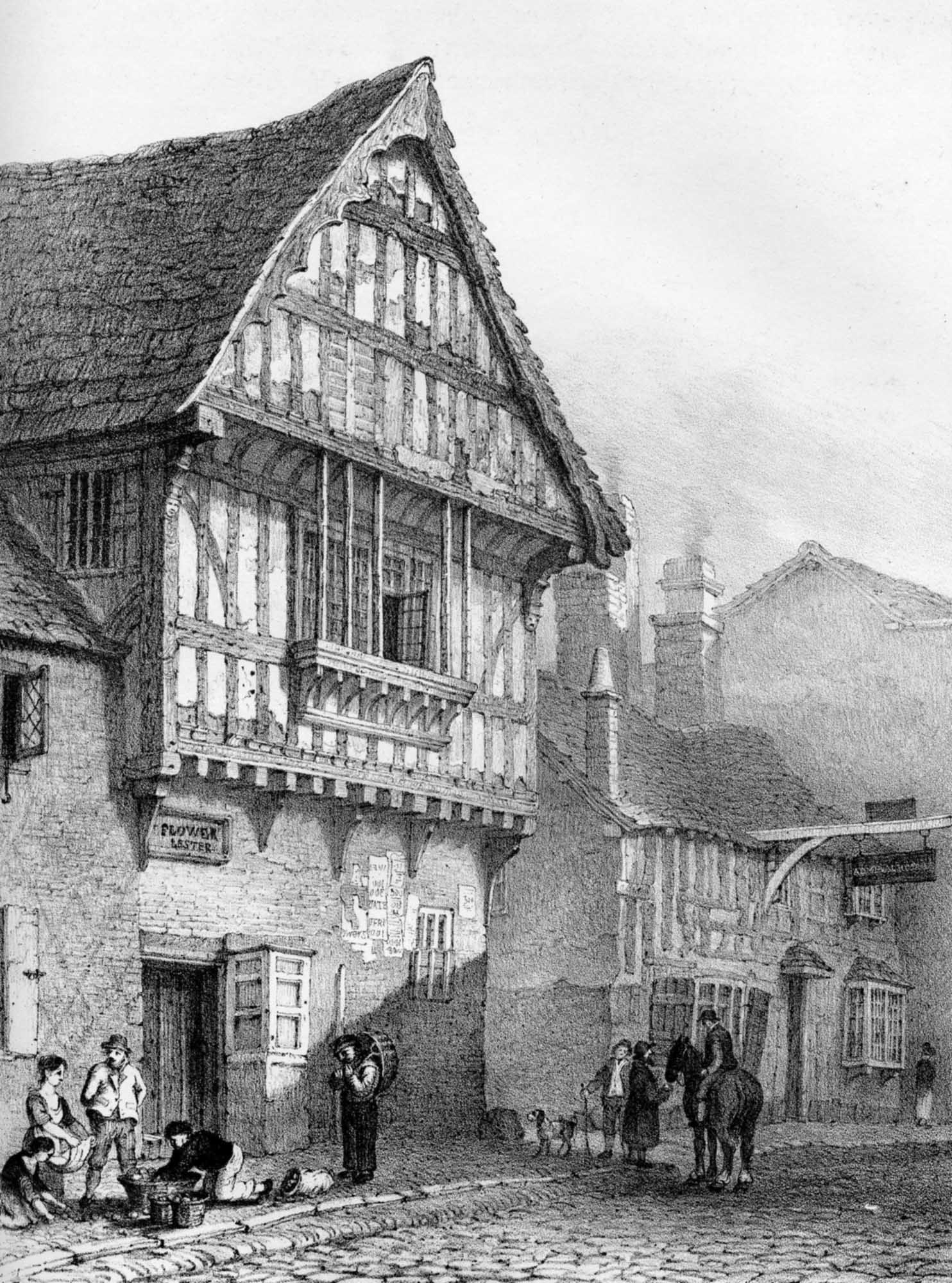
University of Leicester Library Special Collections
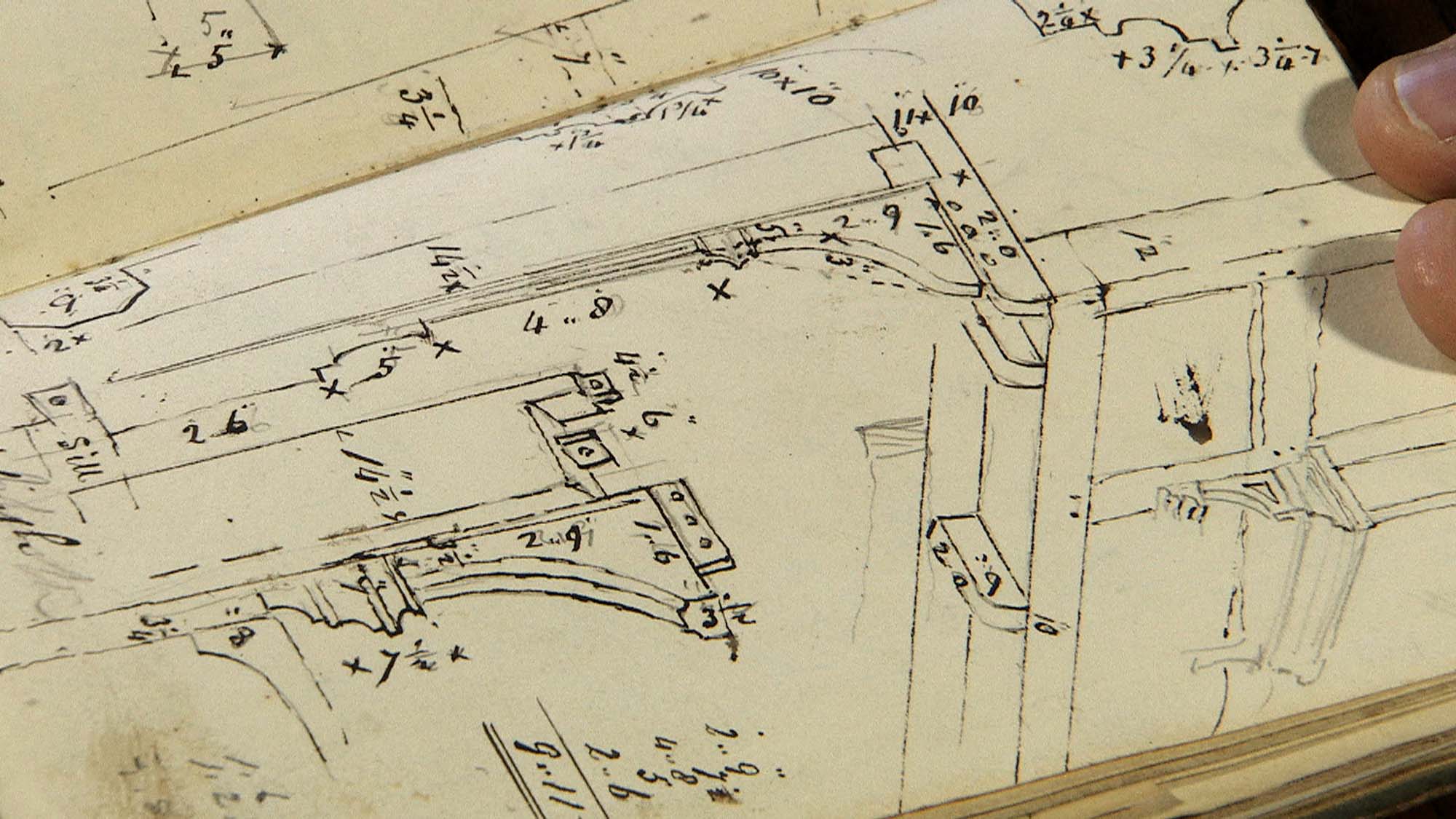
The Goddard family/University of Leicester
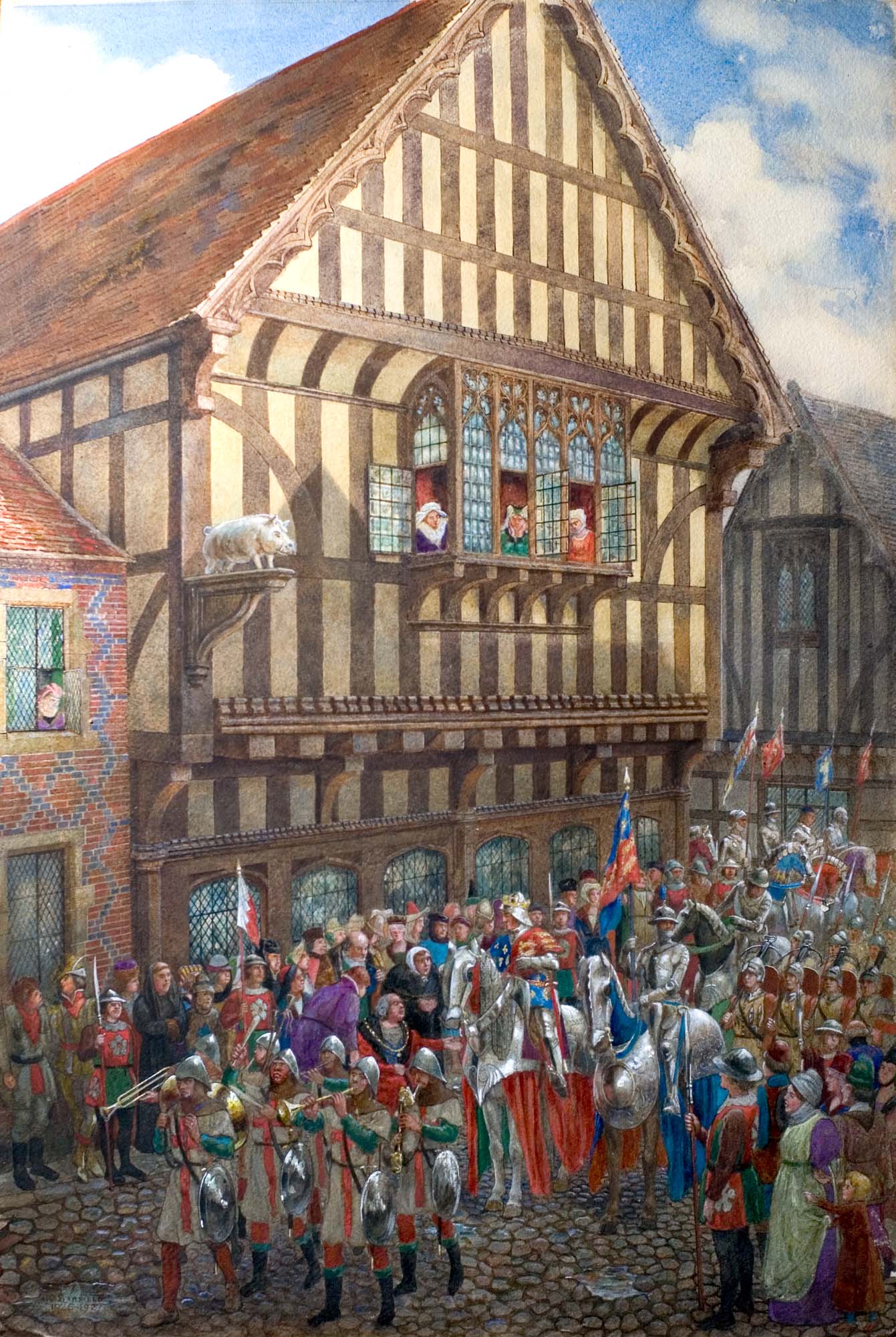
From the collections of Leicester Museums
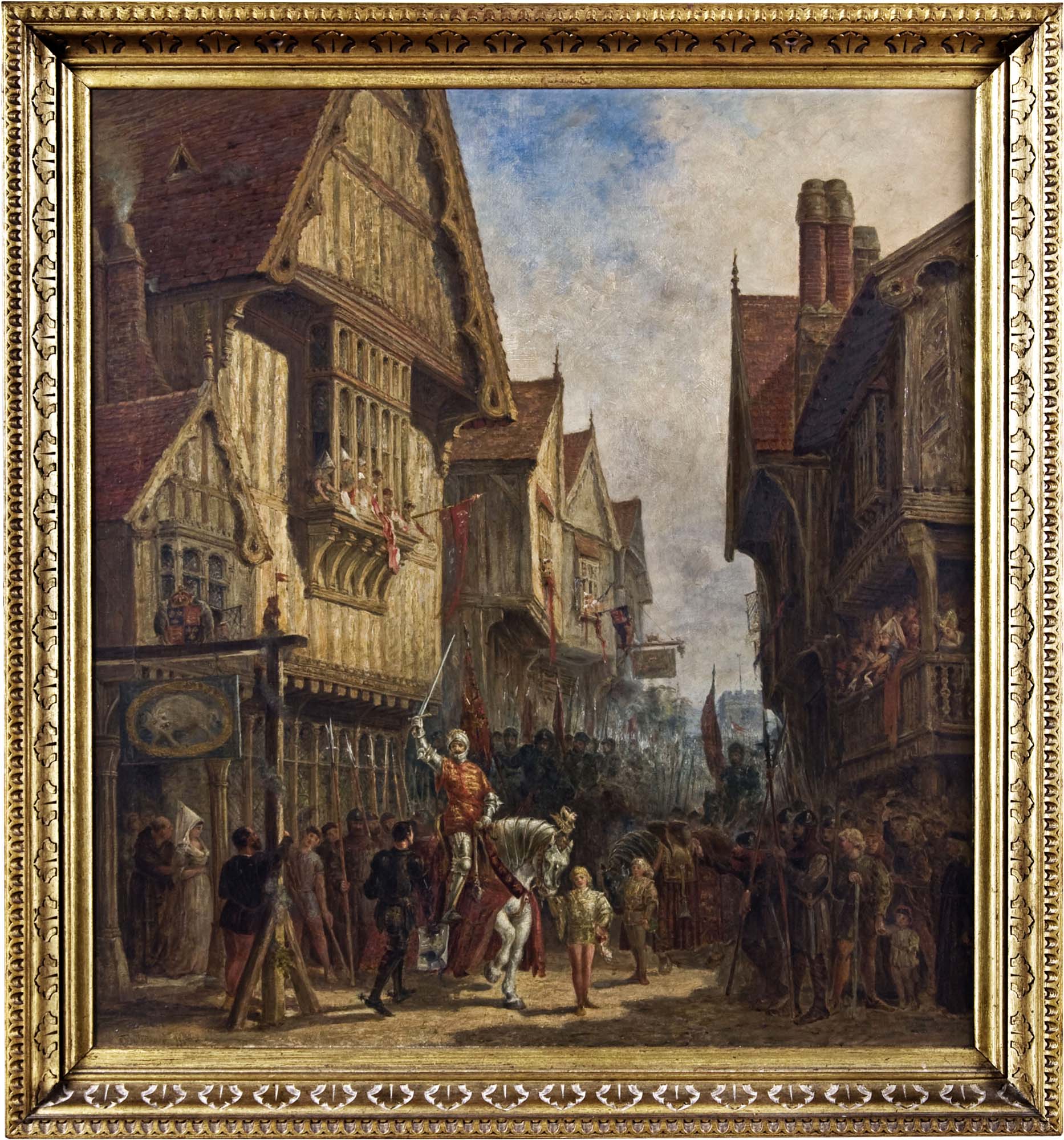
From the collections of Leicester Museums

University of Leicester Library Special Collections
Richard III
Roman Leicester
(47- 500) A military fort was erected, attracting traders and a growing civilian community to Leicester (known as Ratae Corieltauvorum to the Romans). The town steadily grew throughout the reign of the Romans.
Medieval Leicester
(500 – 1500) The early years of this period was one of unrest with Saxon, Danes and Norman invaders having their influences over the town. Later, of course, came Richard III and the final battle of the Wars of the Roses was fought on Leicester’s doorstep.
-
The Castle Motte1068

-
Leicester Cathedral1086

-
St Mary de Castro1107

-
Leicester Abbey1138

-
Leicester Castle1150

-
Grey Friars1231

-
The Streets of Medieval Leicester1265

-
Leicester Market1298

-
Trinity Hospital and Chapel1330

-
Bow Bridgecirca 1350

-
Church of the Annunciation1353

-
John O’Gaunt’s Cellar1361

-
St John's Stone1381

-
Leicester Guildhall1390

-
The Magazine1400

-
The Blue Boar Inn1400

-
The High Cross1577

Tudor & Stuart Leicester
(1500 – 1700) The wool trade flourished in Leicester with one local, a former mayor named William Wigston, making his fortune. During the English Civil War a bloody battle was fought as the forces of King Charles I laid siege to the town.
Georgian Leicester
(1700 – 1837) The knitting industry had really stared to take hold and Leicester was fast becoming the main centre of hosiery manufacture in Britain. This new prosperity was reflected throughout the town with broader, paved streets lined with elegant brick buildings and genteel residences.
-
Great Meeting Unitarian Chapel1708

-
The Globe1720

-
17 Friar Lane1759

-
Black Annis and Dane Hills1764

-
Leicester Royal Infirmary1771

-
New Walk1785

-
Freemasons’ Hall1790

-
Gaols in the City1791

-
Friars Mill1794

-
City Rooms1800

-
Development of Highfields1800

-
Wesleyan Chapel1815

-
20 Glebe Street1820

-
Charles Street Baptist Chapel1830

-
Glenfield Tunnel1832

-
James Cook1832

Victorian Leicester
(1837 – 1901) The industrial revolution had a huge effect on Leicester resulting in the population growing from 40,000 to 212,000 during this period. Many of Leicester's most iconic buildings were erected during this time as wealthy Victorians made their mark on the town.
-
Leicester Union Workhouse1839

-
Campbell Street and London Road Railway Stations1840

-
The Vulcan Works1842

-
Belvoir Street Chapel1845

-
Welford Road Cemetery1849

-
Leicester Museum & Art Gallery1849

-
King Street1850

-
Cook’s Temperance Hall & Hotel1853

-
Amos Sherriff1856

-
Weighbridge Toll Collector’s House1860

-
4 Belmont Villas1862

-
Top Hat Terrace1864

-
Corah and Sons - St Margaret's Works1865

-
Kirby & West Dairy1865

-
The Clock Tower1868

-
Wimbledon Works1870

-
The Leicestershire Banking Company1871

-
St Mark’s Church and School1872

-
Victorian Turkish Baths1872

-
The Town Hall1876

-
Central Fire Stations1876

-
Aylestone Road Gas Works and Gas Museum1879

-
Gas Workers Cottages1879

-
Leicestershire County Cricket Club1879

-
Welford Road Tigers Rugby Club1880

-
Secular Hall1881

-
Development of Highfields1800

-
Abbey Park1881

-
Abbey Park Buildings1881

-
Victoria Park and Lutyens War Memorial1883

-
Leicester Fosse FC 18841884

-
Leicester Coffee and Cocoa Company Coffee Houses1885

-
St Barnabas Church and Vicarage1886

-
Abbey Pumping Station1891

-
Luke Turner & Co. Ltd.1893

-
West Bridge Station1893

-
Thomas Cook Building1894

-
The White House1896

-
Alexandra House1897

-
Leicester Boys Club1897

-
Grand Hotel and General Newsroom1898

-
Highfield Street Synagogue1898

-
Western Park1899

-
Asfordby Street Police Station1899

-
Leicester Central Railway Station1899

Edwardian Leicester
(1901 – 1910) Electric trams came to the streets of Leicester and increased literacy among the citizens led to many becoming politicised. The famous 1905 ‘March of the Unemployed to London’ left from Leicester market when 30,000 people came to witness the historic event.
-
YMCA Building1900

-
The Palace Theatre1901

-
Pares's Bank1901

-
Coronation Buildings1902

-
Halfords1902

-
High Street1904

-
George Biddles and Leicester's Boxing Heritage1904

-
Municipal Library1905

-
Leicester Boys Club1897

-
The Marquis Wellington1907

-
Guild Hall Colton Street1909

-
Women's Social and Political Union Shop1910

-
Turkey Café1901

Early 20th Century Leicester
(1910 – 1973) The diverse industrial base meant Leicester was able to cope with the economic challenges of the 1920s and 1930s. New light engineering businesses, such as typewriter and scientific instrument making, complemented the more traditional industries of hosiery and footwear manufacturing.
-
Dryad Handicrafts1912

-
De Montfort Hall1913

-
Leicester During the First World War1914

-
Fox’s Glacier Mints1918

-
Statue of Liberty1919

-
Housing in Saffron Lane1924

-
Winstanley House1925

-
Housing in North Braunstone1926

-
Lancaster Road Fire Station1927

-
The Little Theatre1930

-
Saffron Hill Cemetery1931

-
Braunstone Hall Junior School1932

-
Former City Police Headquarters1933

-
Savoy Cinema1937

-
Eliane Sophie Plewman1937
-
City Hall1938

-
Athena - The Odeon Cinema1938

-
The Blitz in Highfields1940

-
Freeman, Hardy and Willis - Leicester Blitz1940

-
Leicester Airport1942

-
Leicester’s Windrush Generations1948

-
Netherhall Estate1950
-
Housing at Eyres Monsell1951

-
Silver Street and The Lanes1960

-
Bostik1960

-
Auto-Magic Car Park (Lee Circle)1961

-
University of Leicester Engineering Building1963

-
Sue Townsend Theatre1963

-
Central Mosque1968

-
Belgrave Flyover1973

Modern Leicester
(1973 – present day) Industry was still thriving in the city during the 1970s, with the work opportunities attracting many immigrants from all over the world. While industry has declined in recent years, excellent transport links have made Leicester an attractive centre for many businesses. The City now has much to be proud of including its sporting achievements and the richness of its cultural heritage and diversity.
-
Haymarket Theatre1973

-
The Golden Mile1974

-
Acting Up Against AIDS1976

-
Belgrave Neighbourhood Centre1977

-
Diwali in Leicester1983

-
Leicester Caribbean Carnival1985

-
Samworth Brothers1986

-
Jain Centre1988

-
Guru Nanak Dev Ji Gurdwara1989

-
King Power Stadium2002

-
LCB Depot2004

-
Curve2008

-
BAPS Shri Swaminarayan Mandir2011

-
Makers Yard2012

- Roman Leicester
- Medieval Leicester
- Tudor & Stuart Leicester
- Georgian Leicester
- Victorian Leicester
- Edwardian Leicester
- Early 20th Century Leicester
- Modern Leicester















































































































































